Yesterday I had made a trek down to Winnsboro to donate a crate of Shivar Springs bottles to the Fairfield County Museum. I had a great visit and made some new friends. Sadly, I hadn’t been able to get inside the old Mount Zion Institute. My fellow photographers were not able to join us yesterday, so it was rescheduled for today. I decided that this is a one-shot chance, so I decided to make a second trip down to Fairfield County.
Friday’s weather was completely different from Thursday’s. I got another early start, but this time the planets shown brightly overhead. Another difference is that today I would be joined by my sister, Glynda. I figured it would be fitting, since she had discovered the first set of bottles from Shiver Springs at the Pickens County Flea Market, and had been with me to visit the Shiver Springs cisterns near the ghost town of Shelton. I picked her up in Gray Court, and we headed south…again.
At the Highway 34 exit we left the Interstate and headed east. When we reached the Broad River the cool clear air and created a layer of fog over the river. I wanted to stop and take photos, but we kept going.
When we reached Winnsboro we drove straight to Mount Zion Institute. Bennie Brawley was already there, taking photos of the exterior. Bennie loves to get early morning light shots, and he was set up with tripod and multiple cameras and lenses. Pete Lawrence wouldn’t be able to join us for this trip. As I was talking to Bennie a pickup truck drove up. Sabi Cathcart from FOMZI had arrived to let us in.
As I was gathering my gear I found that I had left my camera strap for my Nikon DSLR at home. It left me a bit flustered as I scrambled to find things. From that point on, I felt off my game – I initially forgot my GoPro, which I did manage to retrieve and attach to my vest, and I also forgot my audio recorder. I put together a make-shift strap, which broke and almost made me drop my camera. Fortunately, Bennie had a spare strap that fit, but frustrations left me somewhat off-kilter. It would affect my photography during the morning’s shoot.
Pelham Lyles joined us, and we were ready to head inside the old school. First, however, I think it’s time to set the stage…
A caveat…I’m late to this party, and since I’m not a resident of the town, I haven’t really kept up with this story. I may not have all of the facts, but here’s what I understand. Also, realize that I’m only getting FOMZI’s side of the story. So, here goes…
According to information on SCIWAY.net…
In 2006 the Mt. Zion Society transferred the property to the Town of Winnsboro in hopes that the buildings could be preserved; however, the town determined that demolition was the best option. In 2008 the non-profit preservation group Friends of Mt. Zion Institute was formed and now holds the title to the property. The organization is seeking to preserve the buildings of this school that shaped the minds of many a young South Carolinian.
In 2011 the city of Winnsboro temporarily turned over possession of the Mount Zion Institute to the Friends of Mount Zion Institute for redevelopment. The term was for eighteen months. Several attempts were made to preserve the building, including a plan by artist and former Furman classmate Dru Blair to turn it into an art school. For whatever reason FOMZI was unable to get traction on redevelopment. They have held fundraisers, and managed to replace windows on the main building, but not much more than that.
The eighteen month time limit is up, and now Mayor Roger Gaddy wants to tear down the building. Apparently the mayor lives on the square with the school and considers it an eyesore. Some of the school’s supporters feel that he has been actively working against FOMZI. FOMZI has found a potential developer, and is hoping that the city will give them the time to get things set up with the developer.
More on the possible fate of MZI later, but back to our visit…
I’m not sure what I was expecting. I guess I had thought that more work would have been done on the interior. Instead, I walked into a gloomy world of peeling paint and graffiti.
Bennie was using his tripod and a wide angle f/2.8 lens to get some long exposure shots of the classrooms. I had my DSLR in my right hand and my flash off-camera in my left. I would take several shots, angling the flash until I got the bounce I wanted.
Watching Bennie at work I realized I’d left my flashlight back at the car. Like I said, I was a bit flustered when I couldn’t find my strap, and I forgot a few things. I walked back to the car, and at Glynda’s request, moved it closer to the entrance. While I was away the group headed down to the auditorium. I joined them there.
The auditorium was in even worse shape. The wooden floor was buckling, and one corner of the floor had completely rotted away. The far side of the balcony had collapsed. Large sections of ceiling tile were missing.
By this time Glynda was getting a bit…freaked out. She was glad I had moved the car closer. She was cold, and she also later explained that this building was exactly like Ford High School, from which she had graduated. It was a tough time for her in the 1960s, especially since our father was principal of the high school. The general decrepitude combined with the cold and odd familiarity got to be just about too much.
Bennie continued shooting in the auditorium, while I went out to explore further. Sabi led me upstairs to the topmost floor. There was more light up here since there wasn’t as much plywood covering the windows.
I went into several classrooms. In some places the plywood had slipped and weather had gotten in to eat away at the flooring. One long room had once been used as the science lab.
I want to stop and make an important point…The amount of peeling paint and dirt can be overwhelming. I was almost moving over to the mayor’s point of view. However, most of this is cosmetic. Yes, the holes in the flooring, especially in the auditorium and gym, have to be addressed. However, that’s wood that can be replaced.
Structurally, the building is sound, especially the main section. Apart from the areas I already knew about, I never felt like I was going to fall through the floor or anything like that. I’ve been through some buildings that are in MUCH worse shape. It’s still going to take a lot of money and lot of work, but this building can be reconditioned and made habitable.
We did NOT get into the teacherage – the house on the campus. I cannot speak to its structural integrity, but from the exterior it looked like it, too, could be preserved. Organizations such as Mike Bedenbaugh’s Palmetto Trust for Historic Preservation have been able to save and restore buildings much further gone than the MZI buildings. This is just on a much larger scale that a typical house restoration.
Sabi and I headed back downstairs. The main floor is actually the second floor. I was curious about the lowest level, so we headed down that way. It was much the same as the upper floors, but darker. I was very glad I had gone back to retrieve my flashlight.
I kind of had to smile at the paint flecking off the walls…Dutch Ivory. I knew the shade well. It seems that every school in this state built during a certain period was painted with a combination of Dutch Ivory or Forest Green. During my summers at Furman I made money by painting the schools in Laurens 55, and it seemed that those two shades were all we used. I bought gallons of the stuff those summers.
Here, at least, they had used some other colors at a later point.
By the time Sabi and I got back to the main floor the others were outside the building. Pelham had returned to the museum, and Glynda was waiting in the car. Bennie had been chatting with Pelham before she left, and as they talked, who should walk by but Elizabeth Martin, the last principal of Mount Zion Institute. Mrs. Martin was with several friends, and they were taking advantage of the new walking path on the long lawn in front of the school. Bennie talked her into posing on the steps of the school, and took this photo with his iPhone.
Her entourage paused at a new marker in front of the school on their second lap, and I was able to chat with her a bit. Mrs. Martin said that she was principal for the last two years, when the school was an elementary school. This would have been 1989-1991.
Sabi needed to leave, but we wanted to take a few more photos in the auditorium and gym. Glynda sat in the car, while Bennie and I headed back in.
Back in the auditorium I made my way back past the hole in the floor and to the stage. The stage looked like it was in pretty good shape. A corridor ran behind the stage, separating the stage from the gym. A large door allowed access to the backstage area.
The gym was a different story. The floor was in very bad shape, and I didn’t trust it to walk out onto it. It looked like the roof had leaked and water had taken its toll. In fact, there was standing water on the floor on our visit.
It might be possible to restore this as a gymnasium, but I see a better use. With its tall windows, I wonder if it would be possible to use it as an open-air event space, much like the Wyche Pavilion in Greenville. It would need concrete floors instead of wood, and I don’t know what’s under the rotting wood. The roof would also need to be reconditioned.
Back in the auditorium, I decided to venture up to the projection booth. I made my way to the lobby and found the stairways leading up to the balcony.
The flooring here was concrete, so I felt OK making the ascent. I didn’t, however, trust the balcony itself, but did pause to take a couple of photos of the stage from above.
A few more steps led up to the booth itself. Sliding windows allowed access to projectors and spotlights. One of these was open, so I took another shot of the stage through it.
A slot window provided a great view out over the front lawn. The ceiling of the booth was tiled with some sort of metal design, much more elaborate than one would imagine for a projection booth. Sadly, there was also an open hole in the ceiling where a cupola or something had been.
I made my way back down and decided I’d left Glynda in the car long enough. It was time to go. Bennie was still taking photos. I must say that his images came out much, much better than mine. He got sharper photos with much better color saturation and composition. My flash technique was a short-cut, and I should have known better. Also, in my flustered state I had not bothered to check ISO settings. Subsequently, my shots have more digital noise than should be allowed. Oh well.
From here we would head back to the museum, and our day was far from over. I’ve written enough for this post, so that will have to wait until Part 3. However, before leaving Mount Zion Institute I have to ponder its ultimate fate.
As I mentioned, the overall structure of the building is sound. Most of the damage we saw was cosmetic. I don’t know about lead in the paint, but the building has been tested for asbestos and found to be clear. At least that hazardous material won’t be an issue. Even so, it’s going to take lots of money and effort to recondition the facility.
Even more than money and effort, the most important thing the parties involved need is vision. How will the facility be used after it’s been restored? Most other projects of this type turn the old school into a community center, theatre, or home for other community services. The centers in Easley and Fountain Inn come to mind, and I was personally involved with the development and support of the Middle Tyger Communty Center in the old Lyman Elementary School. However, the county already has an excellent home for public services, and a restored theater in town serves as a community meeting space. This would be redundant at MZI.
Sabi had mentioned apartments. Personally, I just don’t see a market for it. These would have to be large luxury apartments in order to really be a draw, and, quite frankly, anyone wanting a luxury apartment probably isn’t going to be looking in Winnsboro. Lower cost apartments would certainly help provide better housing for the community, but these are going to require constant repair and support, as lower rent tenants might not be able to help with upkeep. Again, someone might have a vision for how this might work that I’m just missing.
Personally, I think a mixed-use facility would work best. I wish Dru Blair had been able to realize his idea of an art school here. Short of an art school, I could see this being sectioned off as art studios. This would be a great space for painting, photography, a pottery studio, etc., etc. The transformation of the old Southern Bleachery Mill in Taylors comes to mind. Maybe even add a high-end coffee shop and cafe, assuming that could make it in the current economic climate in the town.
On the other side of the coin, what is the town’s plan for land? Does the mayor just want to take the building down to eliminate a hazard? Maybe turn it into more park land with yet more memorials? Put up some other building? So far I’ve only heard the demolition portion of the plan, and that through FOMZI’s point of view. I would hate that they might tear it down…just because, with no real idea how that land would be used.
Even with unlimited resources for restoration, if the building is left unused after so much effort, it will once again fall into ruin, and that would truly be sad. I personally hope that that FOMZI prevails against the wishes of the town and the mayor, and that the building is preserved. I would love to visit in another five years or so and see an active facility with lots of life. Maybe that will happen.
Finally, I would like to thank the Friends of Mount Zion Institute for graciously allowing us access to the building, and for being such wonderful hosts as we scrambled over the facility. Regardless of how this issue resolves, these are good people, and I have made some wonderful new friends through this experience.









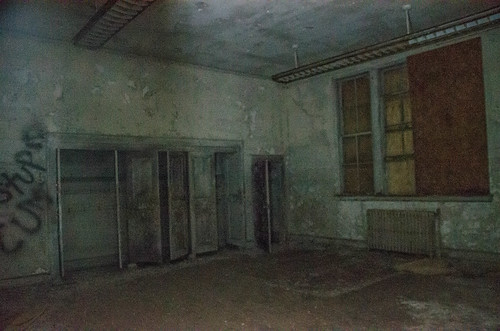


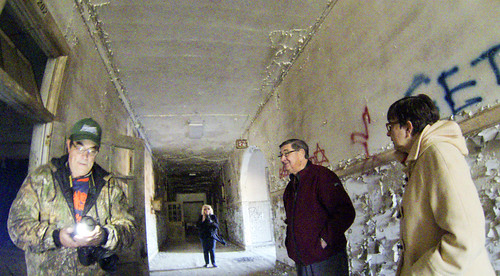


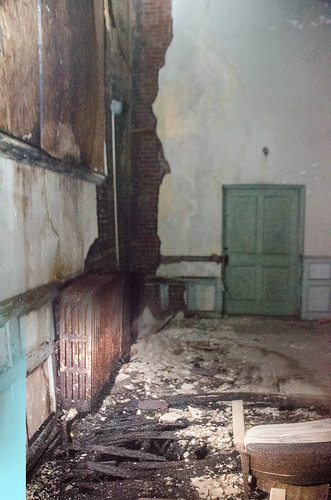















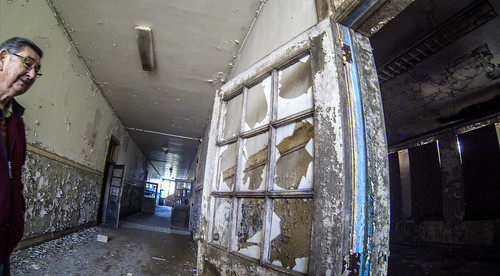



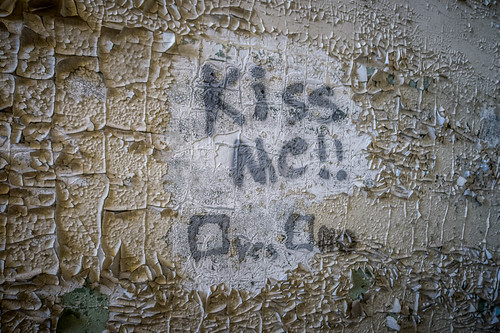


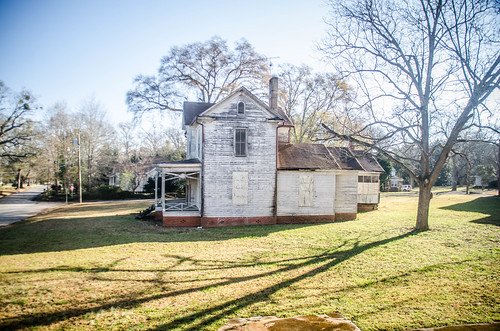








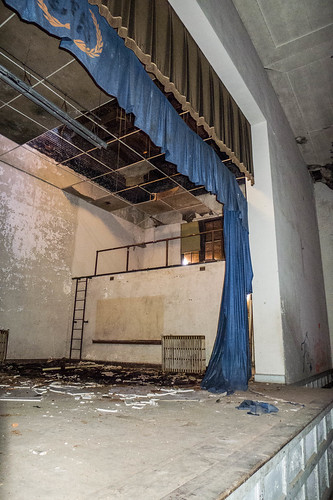






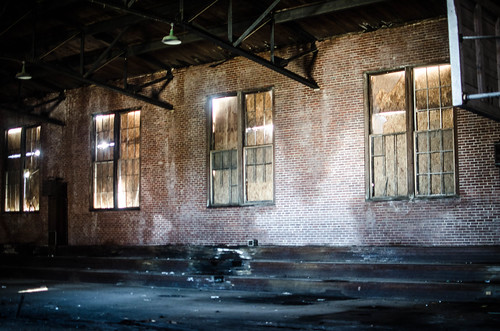

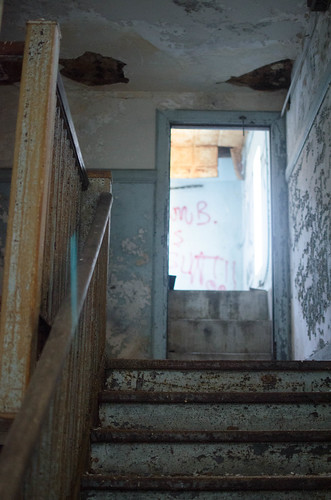










Great photos! I’m jealous you got to explore inside. I hope FOMZI is successful and the building stands for a long, long time.
I am so jealous. I would pay good money to get those shots. To bad FOMZI doesn’t have the property anymore. I doubt the town would be as nice. Liability and a million other reasons they’d dream up to keep people out. 🙁 Still, at least one of us got inside. Did you get a property lease form filled out by the owner?